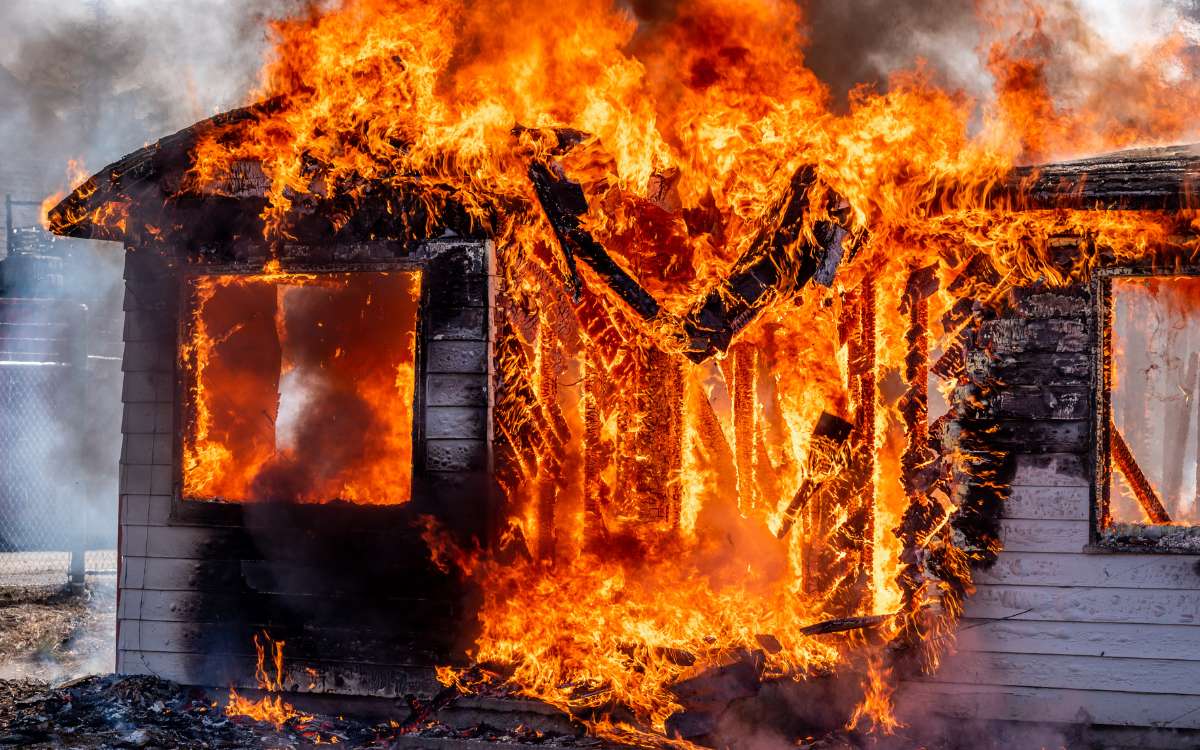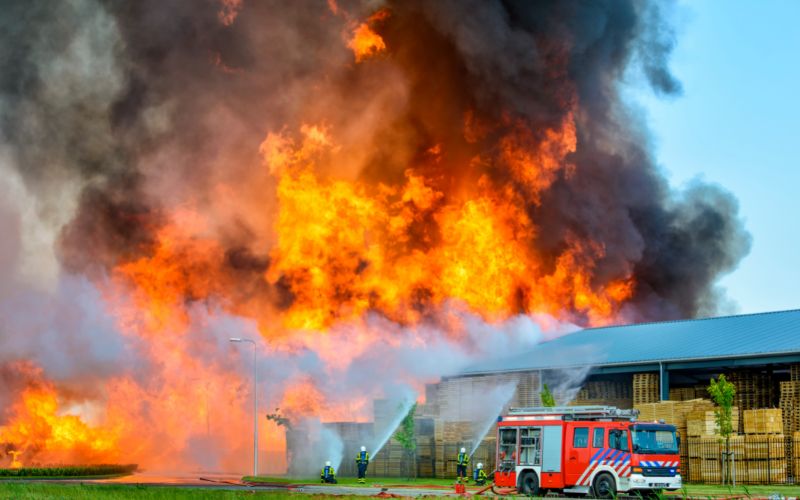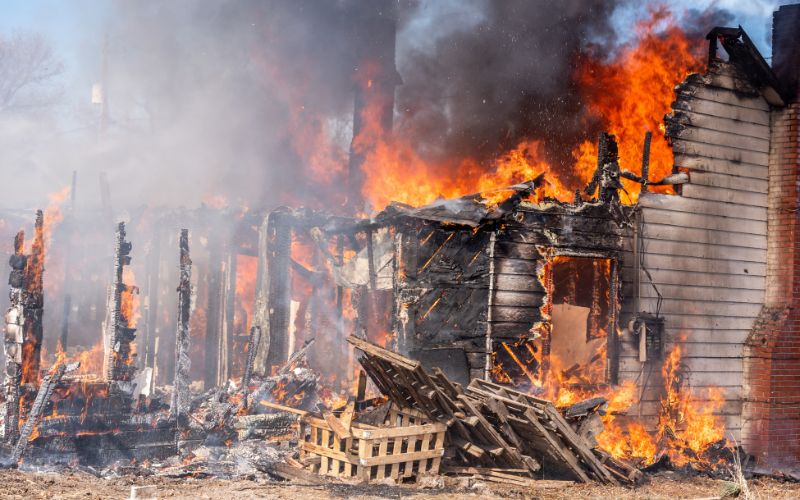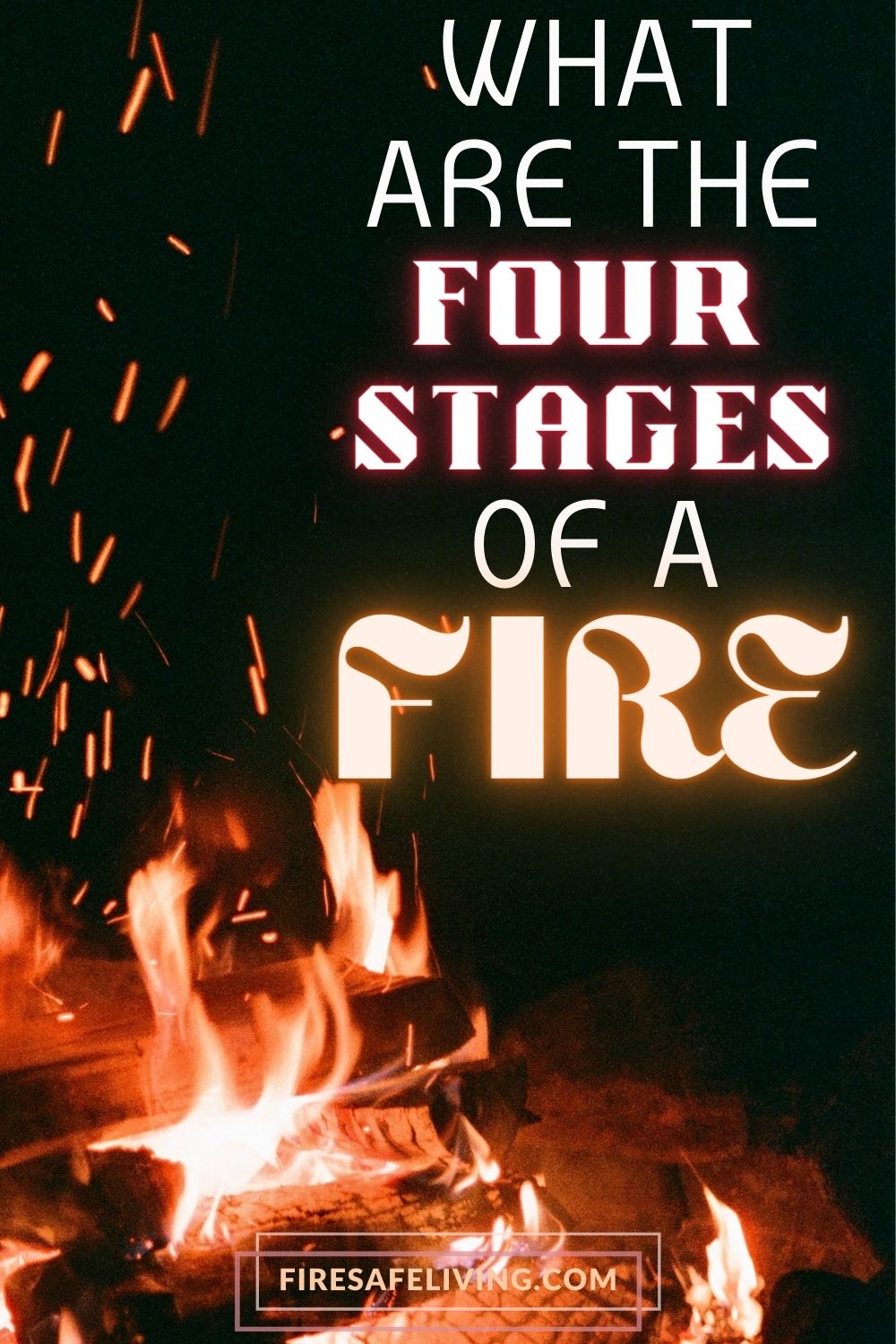Fires can be devastating, causing destruction and taking lives.
But fires are actually composed of four stages that each come with their own set of risks and dangers.
In this article, we’ll take a look at the four stages of fire: ignition/incipient, growth, fully developed, and decay.
We’ll discuss what happens during each stage as well as the safety precautions you should take to protect yourself and your loved ones.

With this knowledge in hand, you can stay safe in the event of a fire.
The Four Stages of Fire: Explained
Stage One – Incipient
The first stage is the incipient stage, which is when a fire starts and initially begins to spread. Heat and smoke are emitted as flames spread and grow in size.
During this stage, the flames are typically below ceiling height and will usually stay in the area where it was ignited.
It is important to act quickly during the incipient stage to prevent the further spread of the fire.
Indicators that indicate a fire has reached its incipient stage include visible smoke, heat, and flames as well as an increase in temperature in the area around the fire.
Additionally, there may be an increase in air movement near the source of ignition due to convection currents caused by the heat from the fire.
It is essential to take action quickly during this ignition stage to prevent further damage and destruction from occurring.
Portable extinguishers should be used to suppress or control the flames before they have a chance to spread further.
Additionally, evacuation procedures should be implemented if necessary to ensure everyone’s safety. And you should call the fire brigade immediately.
Stage Two – Growth Stage

The second stage is the growth stage. The growth stage of a fire is when the fire increases in size and intensity.
During this stage, the fire consumes fuel and oxygen to create more heat and smoke.
The growth stage is typically characterized by an increase in temperature, flame length, and smoke production.
The rate of growth can vary depending on the type of fuel being burned, as well as environmental factors such as wind speed and humidity.
During growth, fire suppression techniques such as water or foam should be used to reduce the amount of fuel available for combustion, while ventilation techniques can be used to reduce the amount of oxygen available for combustion.
It is also important to remember that fires are at their most dangerous stage during growth due to the suddenly increased intensity which can happen very quickly – this is known as the flashover phase.
A flashover is a rapid event that occurs when the heat from a fire causes combustible materials to ignite nearly simultaneously.
This can cause a dramatic increase in the intensity of the fire and can be incredibly dangerous for firefighters.
During a flashover, temperatures inside an enclosed space can reach up to 1,000 degrees Fahrenheit and produce smoke that is so thick it can be difficult to see.
The intense heat and smoke make it extremely difficult for firefighters to enter the area safely, making it important to know when it’s time to get out.
Stage Three – Fully Developed
The third stage is the fully developed stage.
This is when the fire has reached its full potential, with tremendous amounts of heat being produced as well as huge amounts of smoke and toxic gases.
At this stage, the fire is consuming all available fuel in order to sustain itself.
During the fully developed stage, flames become taller, heat production increases significantly, and smoke production reaches its peak.
As the fire spreads rapidly and continues to burn, temperatures can reach upwards of 1,200 degrees Fahrenheit or higher.
Stage Four – Decay Stage

The final stage is known as decay or extinction when all combustible material has burned out and there are no other fuel sources available for the fire to feed on.
During this stage, the fire will slowly decrease in intensity as it uses up the remaining oxygen in the environment.
The flames start to die down and eventually extinguish themselves, leaving behind charred debris from what remains of the fire.
This is the longest stage of fire depending on factors including the size of the fire, the type of fuel being burned, and environmental conditions.
For example, a large fire with plenty of fuel will take longer to decay than a small one with limited fuel. Additionally, windy conditions can cause fires to spread quickly and make them more difficult to extinguish.
Decay is an important part of fire safety because it allows firefighters to safely approach a burning structure without fear of reignition.
Firefighters also use water or foam to cool down hot surfaces during this stage so that they can safely enter a building and begin their investigation into what caused the blaze.
During the decay stage, there are still dangers to be aware of.
The heat from the fire can cause structural damage to buildings, and property damage to belongings and smoke inhalation can be deadly.
Additionally, toxic gases such as carbon monoxide and hydrogen cyanide can linger in the air long after the flames have died down.
It’s important to stay away from areas affected by fires until they have been declared safe by emergency personnel.
Four Stages of a Fire: Overview
Fire is a powerful and destructive force that can cause significant damage to property, belongings, and even human lives.
There are four distinct stages of fire – ignition, growth, fully developed, and decay – each with its own unique characteristics.
It’s important for firefighters to be aware of these stages so they can respond quickly and efficiently in order to minimize the destruction caused by fires.
Additionally, it’s essential for everyone else to stay away from areas affected by fires until emergency personnel has declared them safe.
By understanding how different types of fuel burn at various temperatures over time during each stage of fire development we can better understand how best to protect ourselves against devastating blazes.
